April
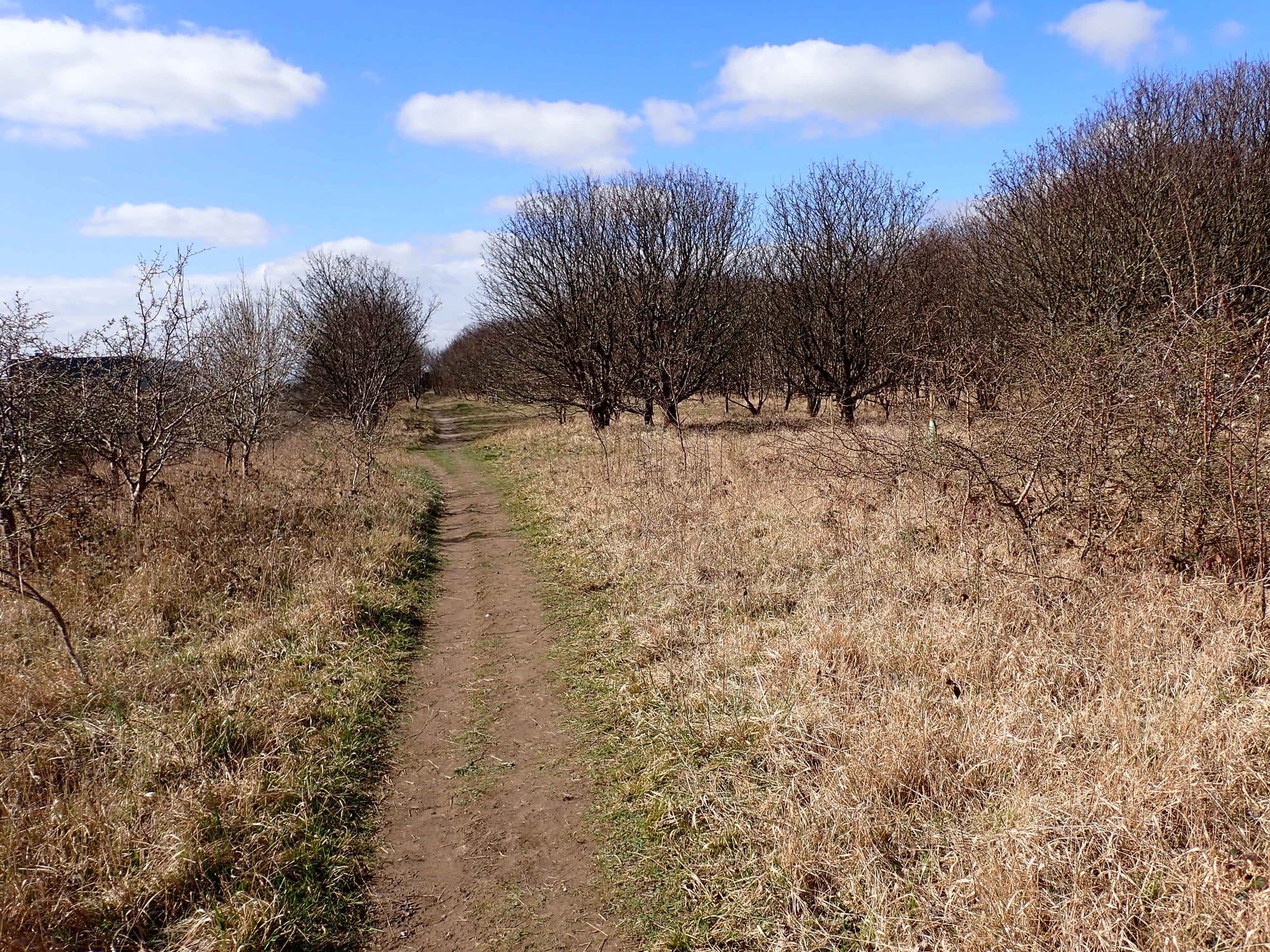
Winter begins to loose its grip; green appears again in places. The first solitary Mining Bees emerge, closely followed by their cleptoparasites, parasites and other species keen to take advantage.
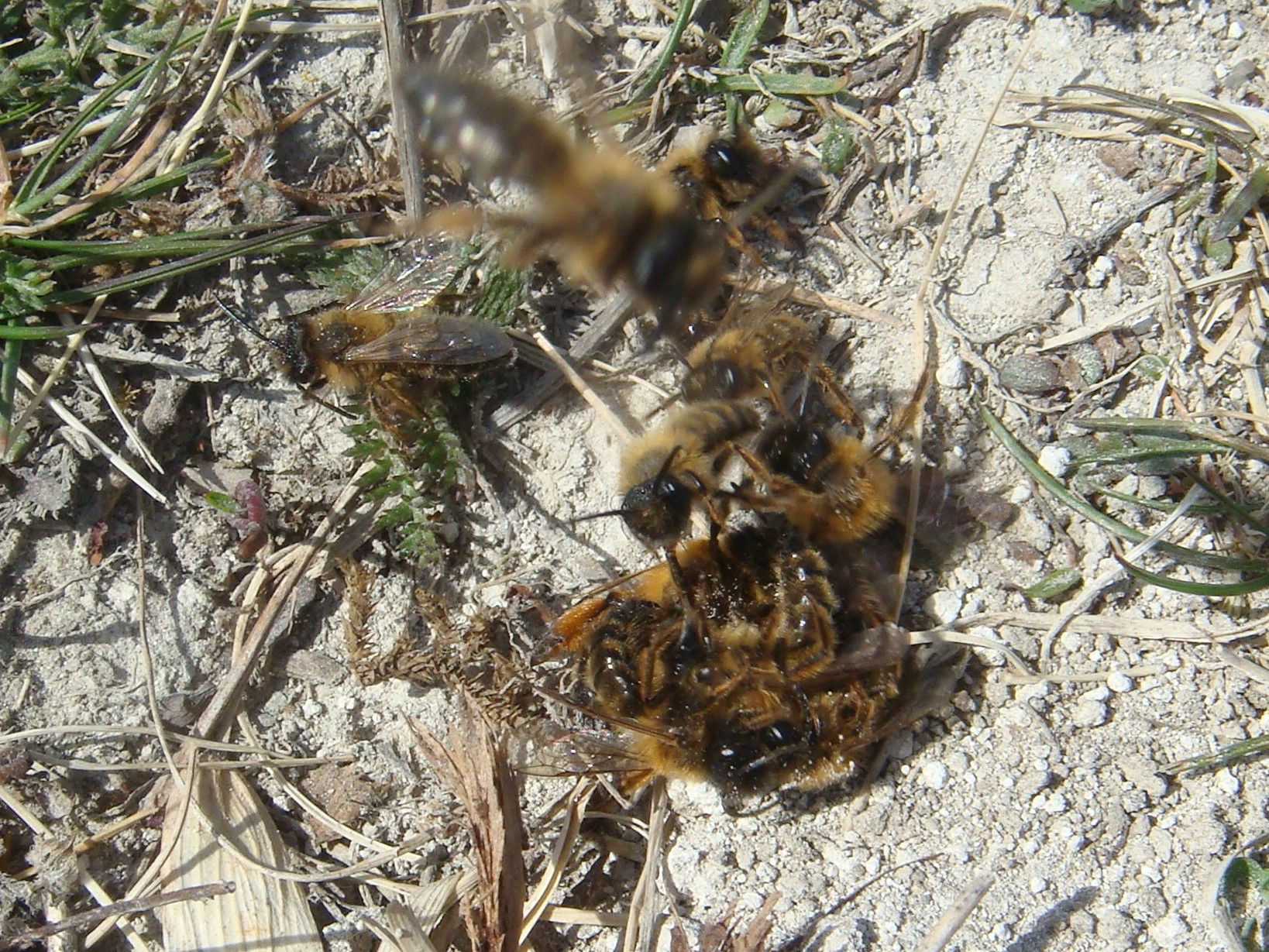
Solitary Buffish Mining Bees, Andrena nigroaena, emerge late in April-May and form mating balls. There are larger numbers of males than females, and each female only mates once, so competition is fierce.
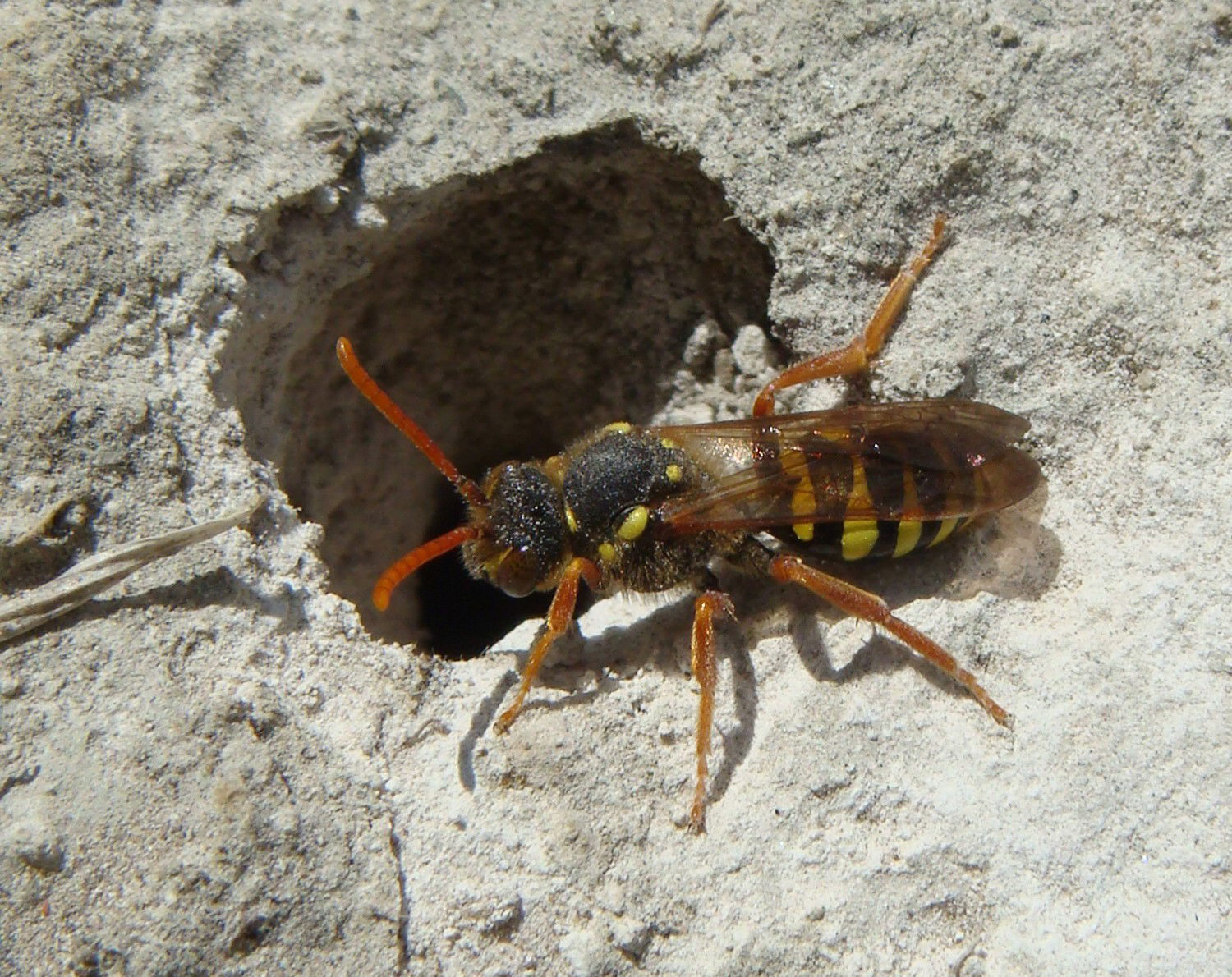
Gooden's Nomad Bee, Nomada goodeniana, female investigating nest hole of her host, the Buffish Mining Bee. When she finds a nest full of nectar and pollen stores she will lay a single egg inside, which will then hatch before the host's egg, and eat up all the stores, before pupating, to emerge in 12 month's time.
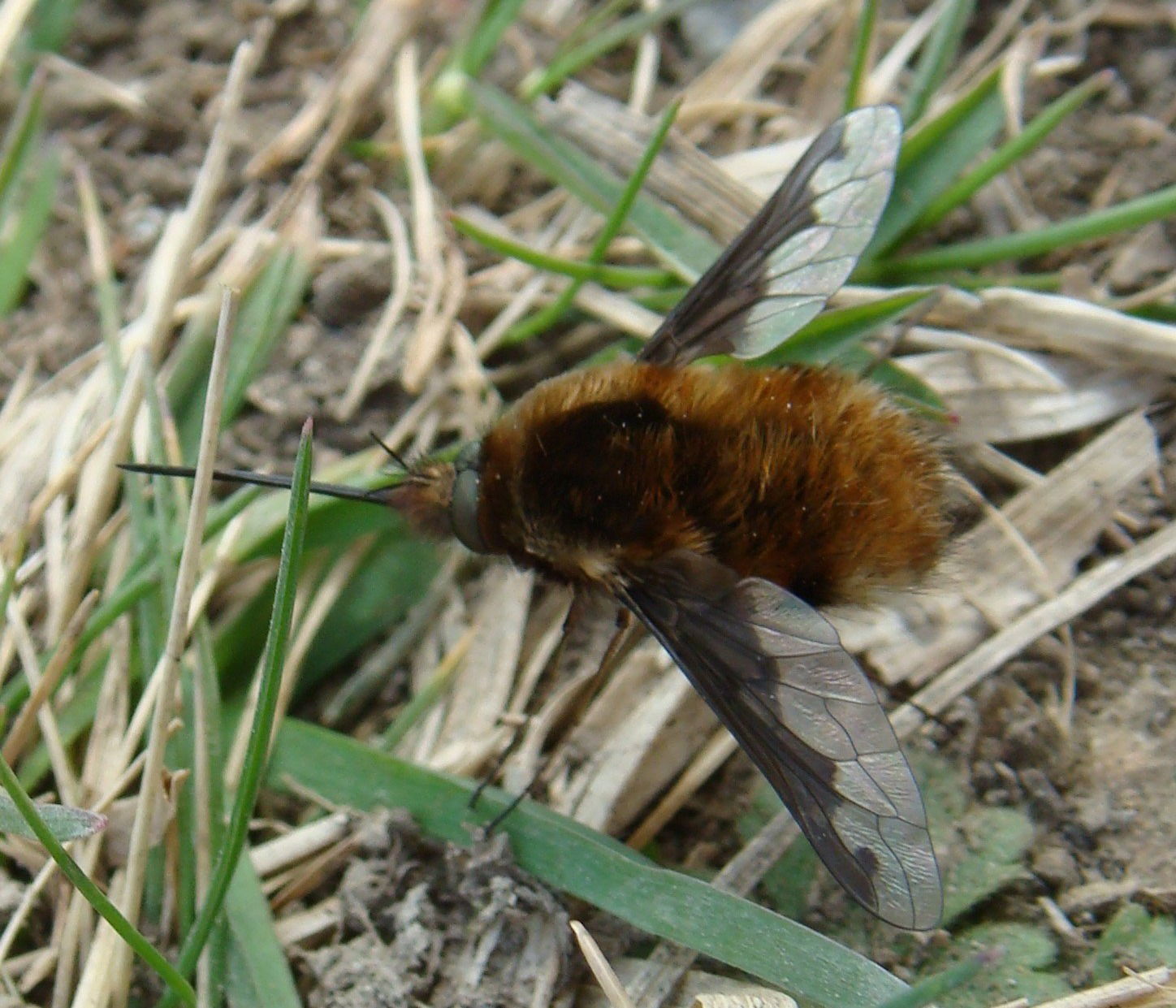
Dark-edged Beefly, Bombylius major, a parasitic bee-mimic fly that emerges as an adult from March. It is often mistaken for a bumblebee. The female deposits her eggs by 'carpet bombing' them close to the nests of bees and wasps. The larvae then work their way into the nests and consume the stores and host eggs/larvae.
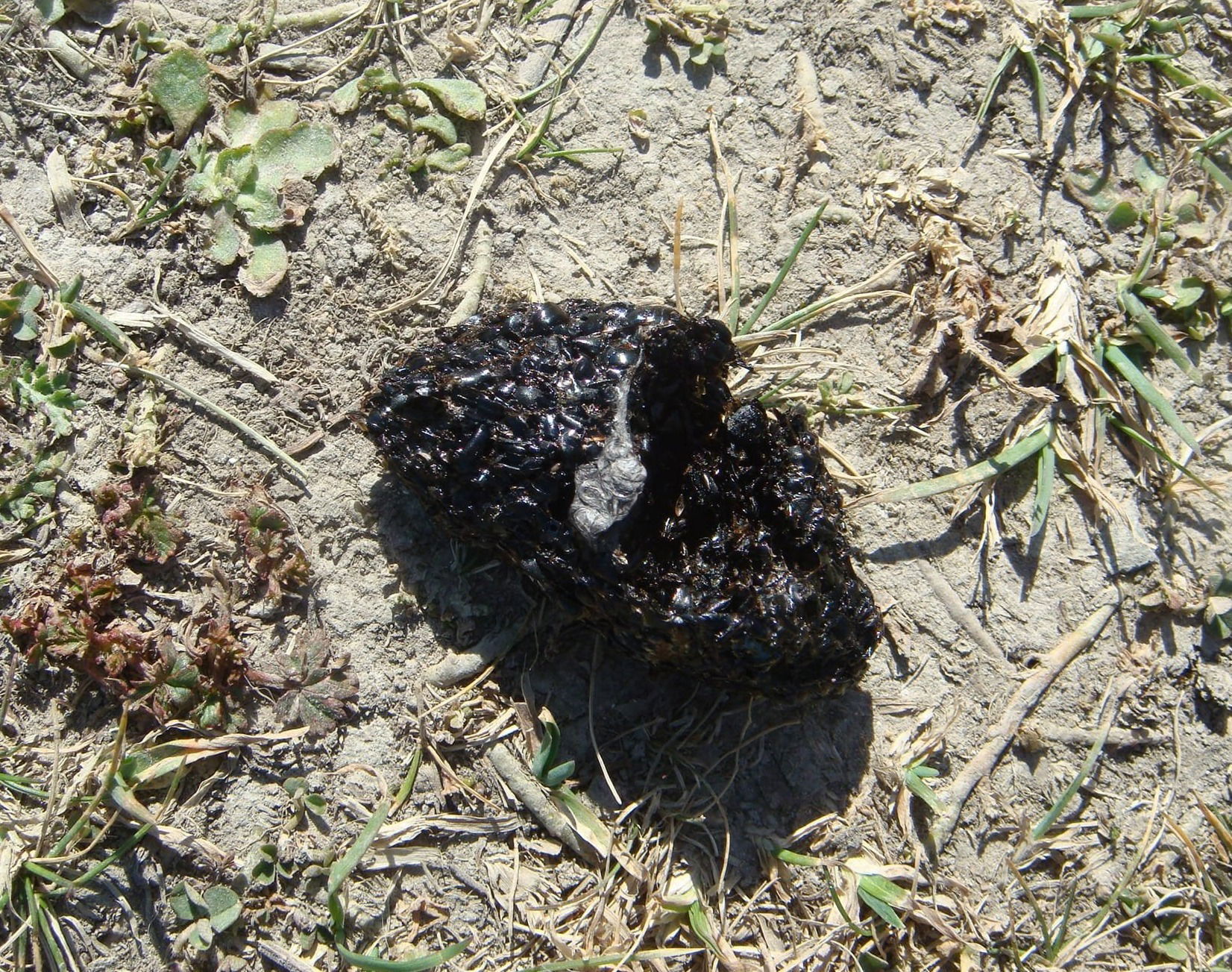
Carrion Crows, Corvus corone, catch hundreds of solitary Mining Bees, then produce pellets composed of the indigestible dark exoskeleton parts.

Alder catkins open and send wafts of yellow pollen into the breeze.
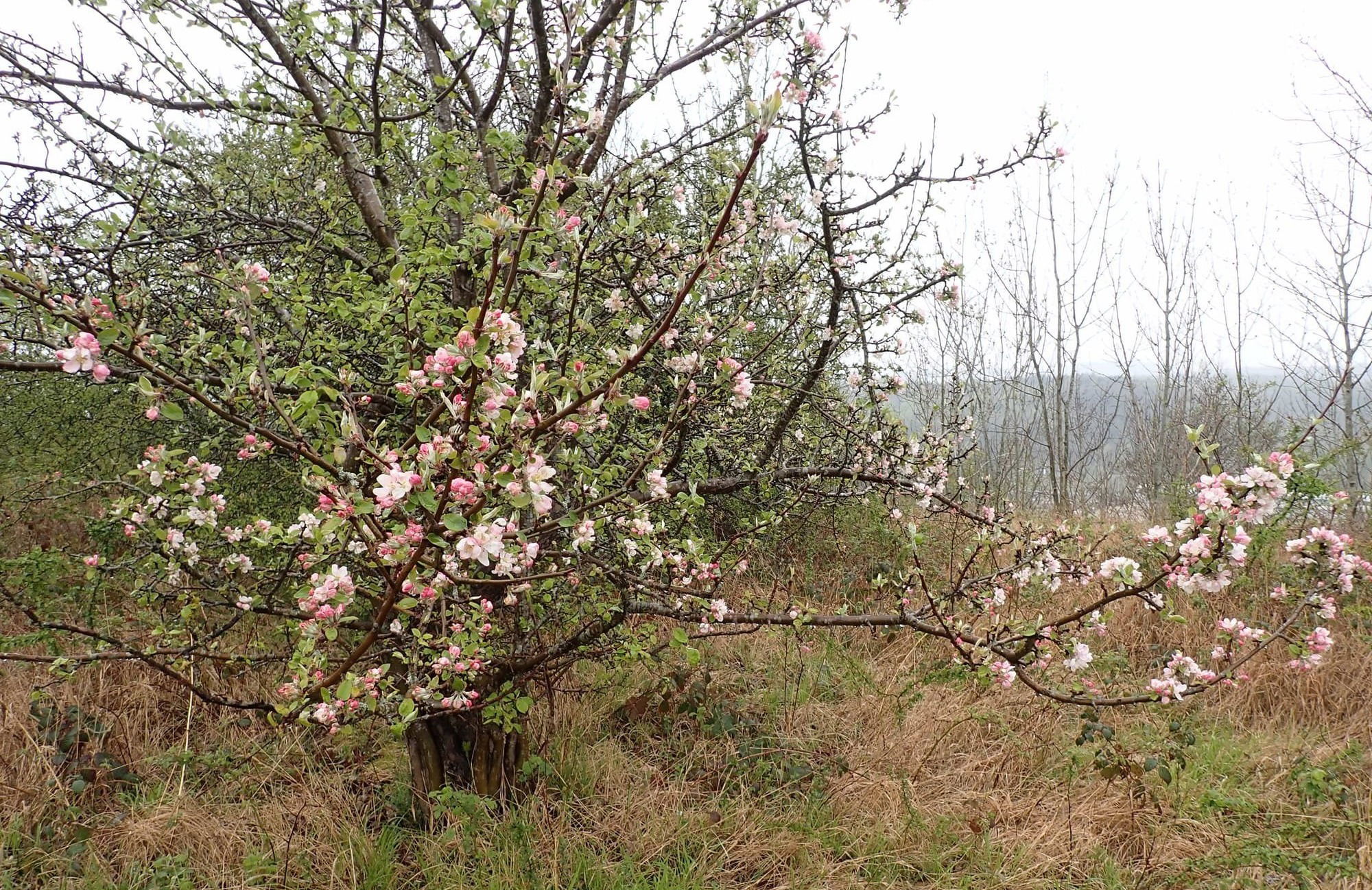
Early blossom on old self-sown apple tree.
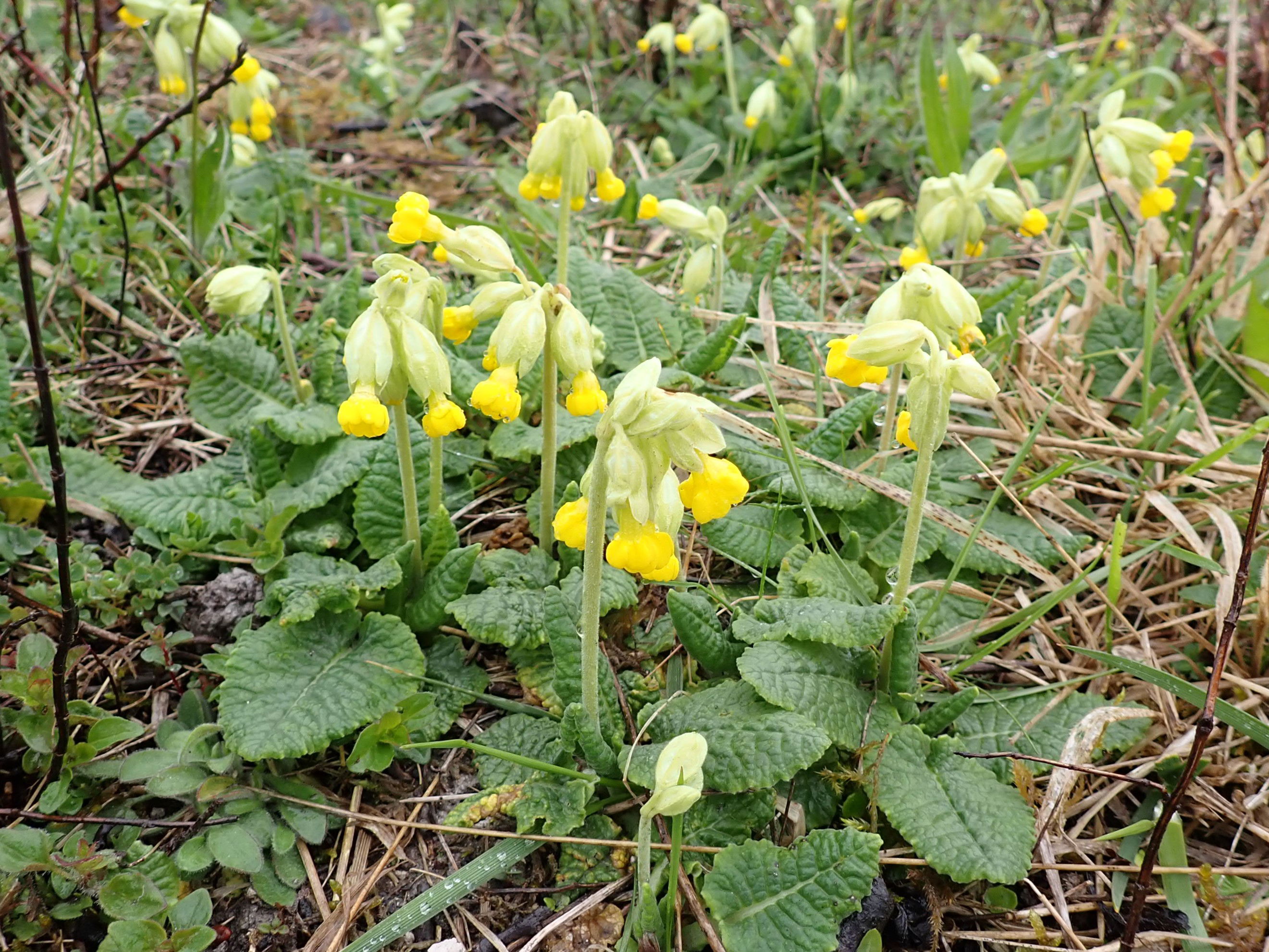
Cowslips open in the meadow on Spetchell 1.
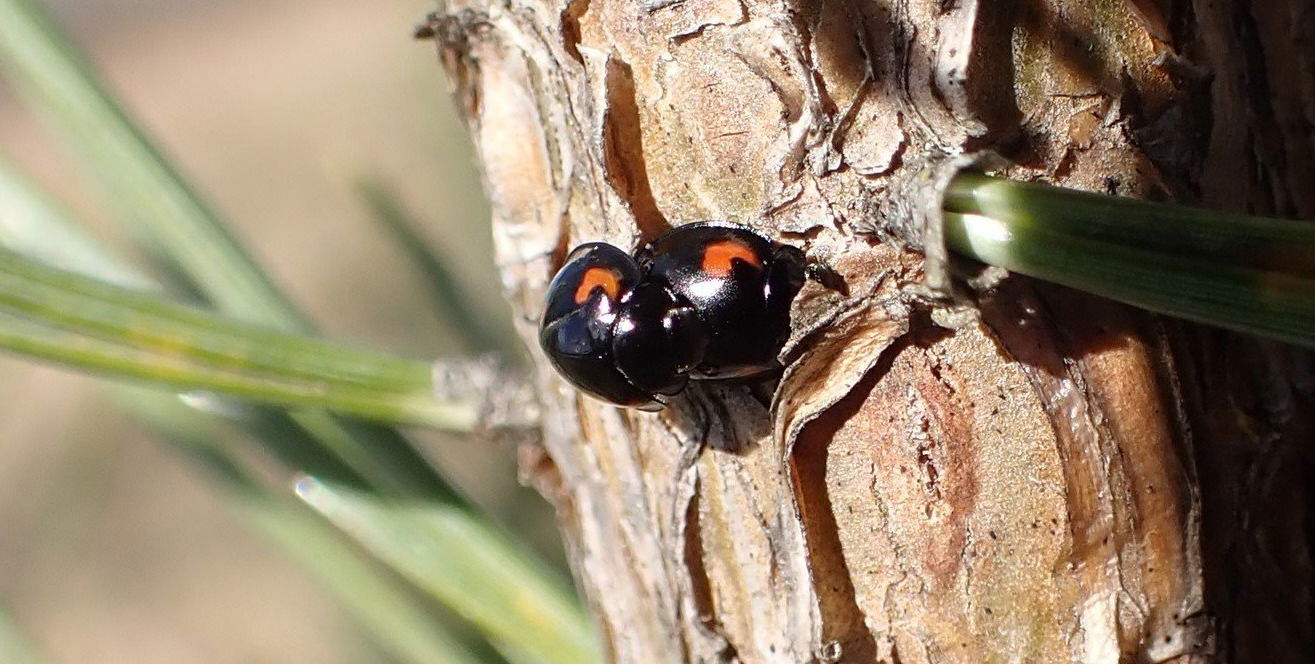
A pair of mating Pine Ladybirds, Exochomus quadripustulatus, think it's spring.
